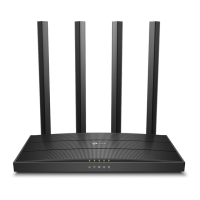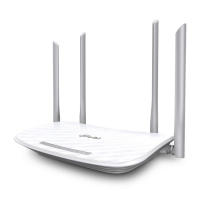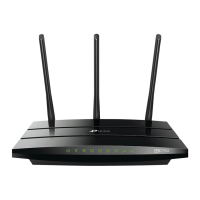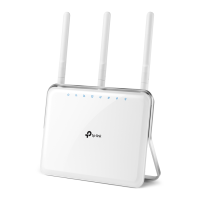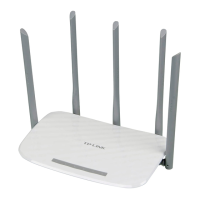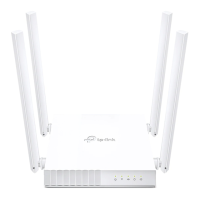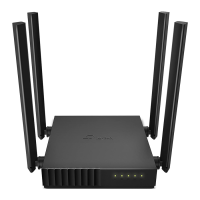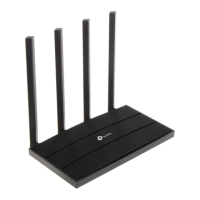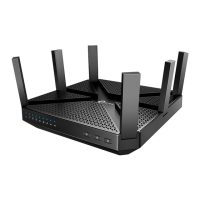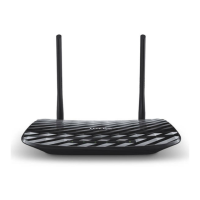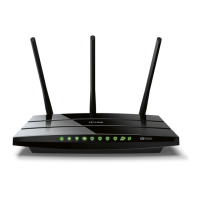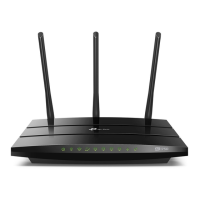Do you have a question about the TP-Link Archer C86 and is the answer not in the manual?
Introduces the router's features and design for SOHO networks and high-performance users.
Details the physical appearance of the router, including the top and back panels.
Explains the status indications of the router's LEDs in both Router and Access Point modes.
Describes the function of each button and port located on the back panel of the router.
Provides guidelines on where to place the router for optimal performance and safety.
Guides users through the physical connection steps for the router, modem, and power.
Walks users through the automated setup process for connecting the router to the internet.
Explains how to use the TP-Link Tether mobile app for a quick router setup.
Details manual configuration steps for various internet connection types like Dynamic IP, Static IP, and PPPoE.
Guides on configuring the router to function as an access point for extending a wired network.
Instructions for setting up an IPv6 connection if provided by the Internet Service Provider.
Provides steps to create a TP-Link ID for cloud services and remote management.
Explains how to modify the email address and password associated with your TP-Link ID.
Details how to add or remove other TP-Link IDs to manage the router, distinguishing between Admin and User roles.
Guides on using the TP-Link Tether app for managing the router and its features remotely.
Instructions on creating a unified Wi-Fi network using TP-Link OneMesh routers and extenders.
Explains how to view and manage mesh devices and connected clients within the OneMesh network.
Guides on setting up a separate Wi-Fi network for guests, including SSID and security configuration.
Details how to configure guest permissions, allowing or restricting access to the local network and other guests.
Enables blocking inappropriate content, setting time limits, and defining bedtime restrictions for child devices.
Details on enabling the SPI Firewall to protect the router from various cyber threats.
Enables blocking or allowing specific devices to access the network using Blacklist or Whitelist.
Prevents ARP spoofing and attacks by binding device IP addresses to their MAC addresses.
Configuration options for Application Layer Gateway settings, recommended to keep as default.
Allows sharing local network services like websites or FTP servers with the internet via port forwarding.
Dynamically opens external ports for specific applications like online games or VoIP upon connection initiation.
Enables UPnP for automatic port opening, facilitating online gaming and real-time communication.
Configures a device as a DMZ host, exposing it to the internet with all ports open for unrestricted communication.
Guides on configuring a dynamic DNS service for remote access to the router using a domain name.
Enables manual configuration of static routes for network traffic management.
Allows advanced configuration of wireless parameters like SSID, security, and channel.
Enables setting schedules for when the wireless network is active or inactive.
Facilitates quick and secure wireless connections using the Wi-Fi Protected Setup (WPS) button.
Provides access to further advanced wireless configuration options not covered in basic settings.
Allows modification of the router's LAN IP address and subnet mask to avoid conflicts or customize the network.
Guides on setting up IPTV/VLAN configurations for internet, IPTV, and phone services based on ISP requirements.
Enables dynamic IP assignment to client devices and allows IP address reservation for specific devices.
| Wireless Standards | IEEE 802.11ac/n/a 5GHz, IEEE 802.11b/g/n 2.4GHz |
|---|---|
| Frequency Bands | 2.4 GHz, 5 GHz |
| Ethernet Ports | 1 x Gigabit WAN, 4 x Gigabit LAN |
| Wireless Security | WPA, WPA2 |
| Button | WPS/Reset Button |
